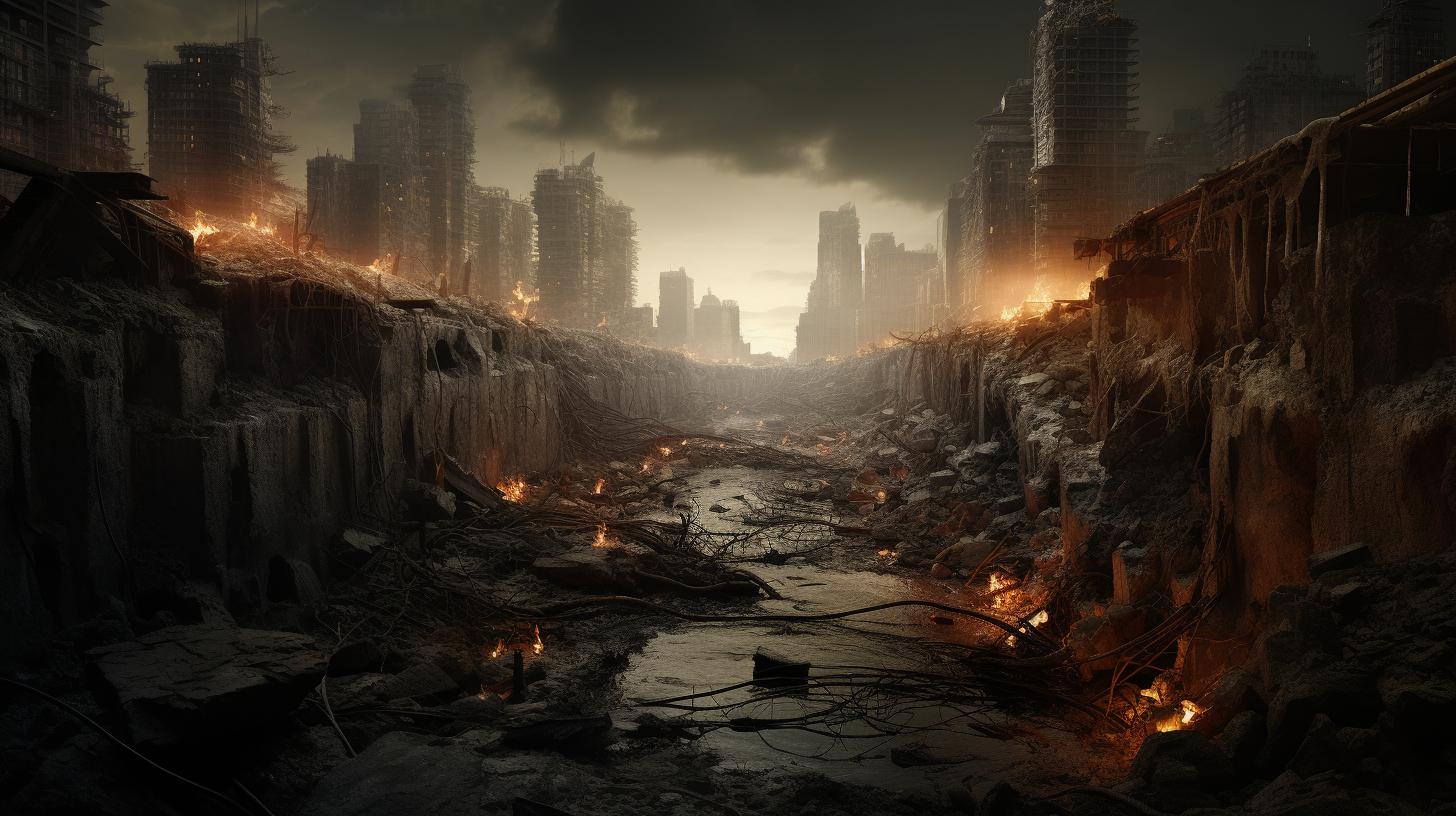The year is 2023, and the bleak surface of the Earth bears witness to a grim tale of environmental misadventure. A once vivacious planet, now a hostile landscape shrouded in perpetual twilight, rendered breathless by the caustic kiss of its own toxic atmosphere. Humans, in their indefatigable spirit, navigate this desolate tableau, not only surviving against the odds but carving out new ways of existence. One of the most remarkable adaptations to this dire chapter in human history is the inevitable rise of underground societies.
Decades of warnings went unheeded, and the meadows are silent, the forests forsaken. The sun, weakened by the onslaught of smog, barely skirmishes through the bubbling overcast to graze the Earth’s surface. Above ground, the air sears the lungs, a stark reminder of the arrogant oversight of environmental responsibilities. The safe havens, the Neo-Edens and pollution sanctuaries, stand as rare beacons of semi-clean air in a chocking world.
‘Air That Burns – Surviving the Toxic Atmosphere’ and ‘Gray Havens: Surviving in the World’s Pollution Sanctuaries’, our preceding explorations into this stark reality, introduced you to the miraculous adaptations individual and collectives have made on the surface. Today, we delve deeper—literally. Humans have, out of sheer necessity, sought solace in the arms of the subterranean, giving birth to sprawling underground societies.
In these subterranean vestiges of a moribund civilization, life thrums with a strange vibrancy. The bowels of the Earth cradle entire communities, with intricate tunnel systems and cavernous halls that encompass the full spectrum of urban existence. There is a market district, a cultural quarter, even an ersatz ‘outdoors’ – complete with artificial parks that mimic the verdancy of a bygone era.
The silent warren of the underground has prompted innovative technologies and social systems. These societies thrive on ingenious advancements in air purification, artificial lighting that imitates a circadian rhythm, and cultivated flora and fauna akin to the heralded surface sanctuaries’ solutions. Astonishingly, these bold pioneers have not totally relinquished the dream of blue skies, their collective remembrance of a cleaner past fueling unconventional cultural expression evocative of an Edenic nostalgia.
Beyond mere survival, a defining feature of these societies is their resilience conjoined with a vibrant cultural fabric. Murals and sculptures hewn into rock faces depict stories of the upper world’s splendor and fall. Theatre pieces narrate the cautionary tales, whilst the minimally lit bistros and bars buzz with the rebels’ whispers, those committed to a seemingly quixotic quest of reversing the atmospheric anarchy.
And yet, these underground societies are not mere hideouts or refuges; they are emblems of innovation. Here, life is choreographed with a precision governed by the unyielding presence of technology. Unlike the surface sanctuaries—where hope, though dim, still flickers—in the underground, hope has been substituted with pragmatism. The semblance of natural life is a stark reminder of the greater loss, a loss that is universally accepted. Within these confines, children are raised not with dreams of clear skies but with the skills to manipulate and master their environment, under round-the-clock artificial suns.
Education emphasizes survival and environmental stewardship, albeit within the artificial biomes that are now their world. They learn of the sun and clouds, not from experiences but from textbooks that might as well be fiction. They grow versed in a simulated normalcy, their realities a testament to human adaptability and the extent of the environment’s ruination.
Perhaps most poignantly, the subterranean existence represents a new evolutionary chapter: one of necessity over nature, innovation over inheritance. From utilitarian attire to scrub the toxins to the ubiquitous masks – that are both identity and lifeline – the people of these societies embody a fusion of post-catastrophic resourcefulness with a trace of the humanity that once was.
As we grapple with the reality of these underground enclaves, we are invited not only to bear witness to their existence but to reflect deep within our souls. Do we dare envision a day when the sky will reclaim its azure splendor? Or has the sun set perpetually on a world that will never breathe freely again? The narrative of the underground society is more than a phenomenon; it is a poignant probe into the heart of human resilience and the unyielding challenge of climate change.
